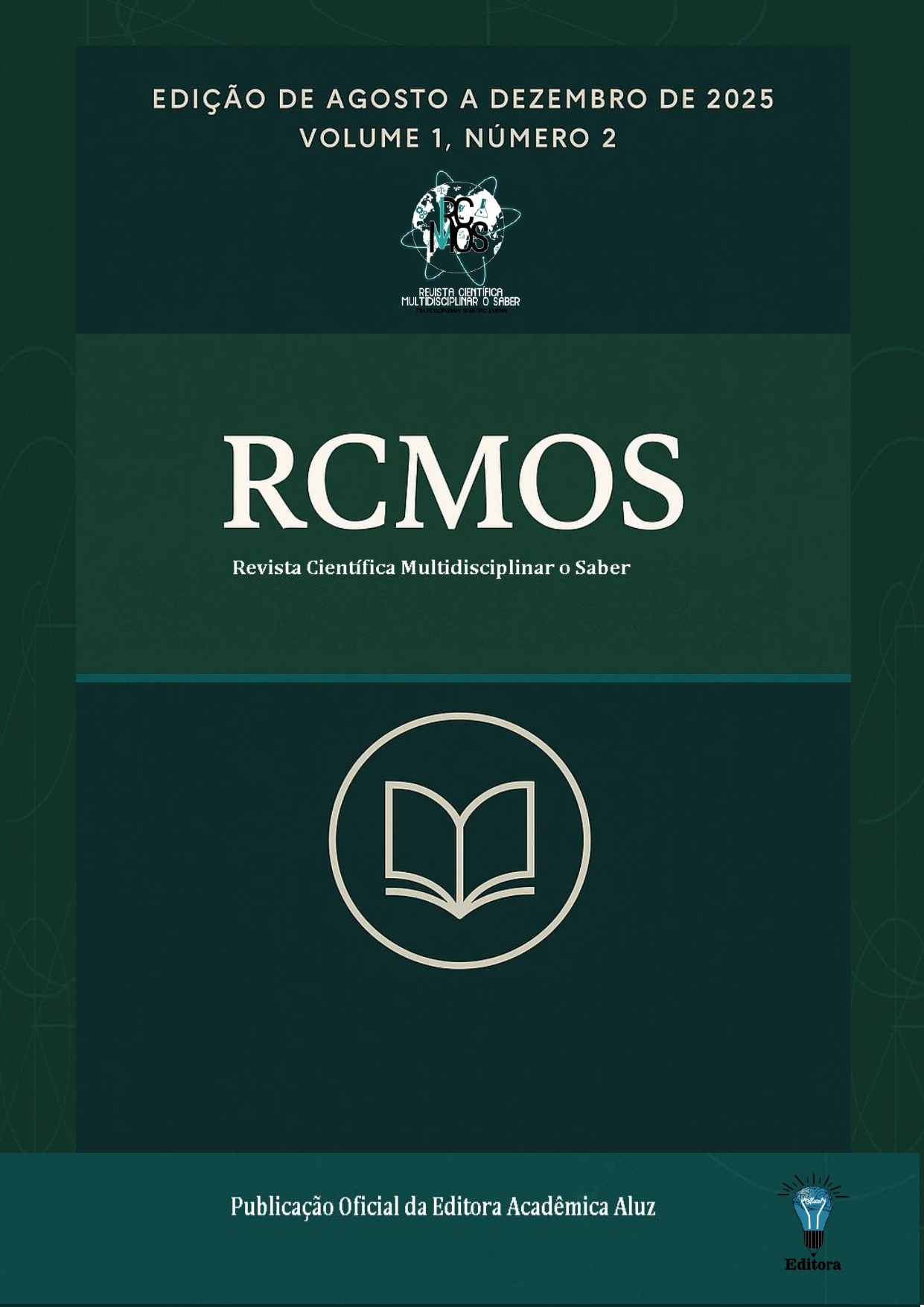Exposure to screens during early childhood: implications for children's neurodevelopment
Exposure to screens during early childhood: implications for children's neurodevelopment
DOI:
https://doi.org/10.51473/rcmos.v1i2.2025.1227Keywords:
use of screens. Early childhood. Neurodevelopment.Abstract
This study looks at the effects of excessive exposure to screens during early childhood and its implications for children's neurodevelopment. The digital revolution has introduced electronic devices into families' daily lives, bringing children into early contact with digital media. Early childhood, a period marked by intense neuroplasticity, depends heavily on sensory, social and motor interactions for healthy brain development. The COVID-19 pandemic has intensified children's exposure to screens, exceeding the recommendations of the American Academy of Pediatrics. The literature shows that excessive screen use is associated with deficits in cognitive development, delays in expressive language, impairments in executive function and structural changes in the white matter of the brain. Piaget's theories of neuroplasticity and sensory integration provide a theoretical basis for understanding how the use of screens can interfere with the active construction of children's knowledge. A narrative review of the literature, based on DeCS descriptors and the selection of relevant studies, showed that screen time replaces fundamental interactions for child development. Longitudinal and neuroimaging studies show alterations in the brains of children with high digital media use. It is concluded that the use of screens must be controlled and mediated by adults, especially in the first five years of life, to preserve the child's neurological health and overall development. The integrated action of health professionals, educators and families is essential for the effective application of these recommendations.
Downloads
References
CHOI, Eun Jung; KING, Gabrielle K.C.; DUERDEN, Emma G. Screen time in children and youth during the pandemic: A systematic review and meta-analysis. Global Pediatrics, [S.l.], v. 6, art. 100080, dez. 2023. Disponível em: https://doi.org/10.1016/j.gpeds.2023.100080. DOI: https://doi.org/10.1016/j.gpeds.2023.100080
HENSCH, Takao K. Critical period regulation. Annual Review of Neuroscience, [S.l.], v. 27, p. 549–579, 2004. DOI: 10.1146/annurev.neuro.27.070203.144327. Disponível em: https://doi.org/10.1146/annurev.neuro.27.070203.144327. DOI: https://doi.org/10.1146/annurev.neuro.27.070203.144327
HUTTON, J. S. et al. Associations between screen-based media use and brain white matter integrity in preschool-aged children. JAMA Pediatrics, [S.l.], v. 174, n. 1, e193869, 2020. DOI: https://doi.org/10.1001/jamapediatrics.2019.3869
KOLB, Bryan; GIBB, Robbin. Brain plasticity and behaviour in the developing brain. Journal of the Canadian Academy of Child and Adolescent Psychiatry = Journal de l'Académie canadienne de psychiatrie de l'enfant et de l'adolescent, [S.l.], v. 20, n. 4, p. 265–276, 2011.
MADIGAN, Sheri et al. Associations between screen use and child language skills: a systematic review and meta-analysis. JAMA Pediatrics, [S.l.], v. 174, n. 7, p. 665–675, 2020. DOI: 10.1001/jamapediatrics.2020.0327. Disponível em: https://doi.org/10.1001/jamapediatrics.2020.0327. DOI: https://doi.org/10.1001/jamapediatrics.2020.0327
NATIONAL SCIENTIFIC COUNCIL ON THE DEVELOPING CHILD. The science of early childhood development: Closing the gap between what we know and what we do. Cambridge, MA: Harvard University, 2007.
PIAGET, Jean. A formação do símbolo na criança: Imitação, jogo e sonho imagem e representação. 3º ed. Rio de Janeiro: LTC, 1964.
Schaaf, R. C., & Mailloux, Z. Clinician’s guide for implementing Ayres sensory integration: promoting participation for children with autism. Bethesda: AOTA Press. 2015.
STICCA, Fabio; BRAUCHLI, Valérie; LANNEN, Patricia. Screen on = development off? A systematic scoping review and a developmental psychology perspective on the effects of screen time on early childhood development. Frontiers in Developmental Psychology, v. 2, art. 1439040, 7 jan. 2025. DOI: 10.3389/fdpys.2024.1439040. Disponível em: https://doi.org/10.3389/fdpys.2024.1439040. DOI: https://doi.org/10.3389/fdpys.2024.1439040
THOMPSON, D. A. et al. Screen media exposure in the first 2 years of life and preschool cognitive development: a longitudinal study. Pediatrics, [S.l.], v. 149, n. 4, e2021050836, 2022.
VAN DEN HEUVEL, M. et al. Mobile media device use is associated with expressive language delay in 18-month-old children. Journal of Developmental & Behavioral Pediatrics, [S.l.], v. 40, n. 2, p. 99–104, 2019. DOI: https://doi.org/10.1097/DBP.0000000000000630
ZHANG, G. et al. Television watching and risk of childhood obesity: a meta-analysis. European Journal of Public Health, [S.l.], v. 31, n. 1, p. 1–8, 2021.
ZIMMERMAN, F. J.; CHRISTAKIS, D. A.; MELTZOFF, A. N. Television and DVD/video viewing in children younger than 2 years. Archives of Pediatrics & Adolescent Medicine, [S.l.], v. 161, n. 5, p. 473–479, 2021. DOI: https://doi.org/10.1001/archpedi.161.5.473
Downloads
Additional Files
Published
Issue
Section
Categories
License
Copyright (c) 2025 Caroline Oliveira Castilho, Caroline Barcia Rodrigues, Cristiane Sarmento Cruz, Luan Alvarenga de Almeida Duarte, Felipe Nascimento Bicalho (Autor)

This work is licensed under a Creative Commons Attribution 4.0 International License.












